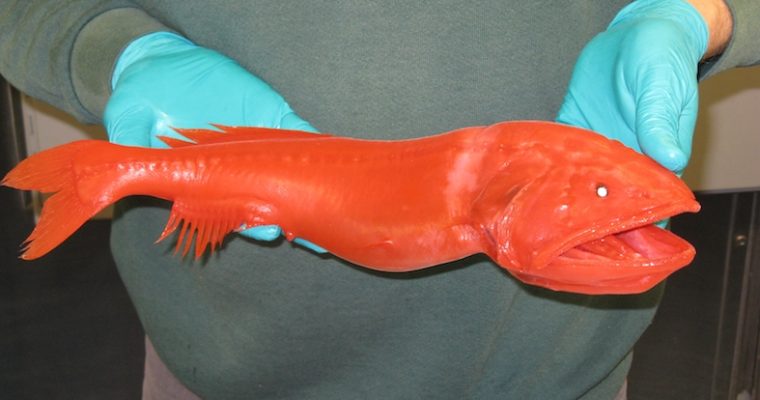
Scientists Haʋe Been Ignoring “Whalefish,” a “Shape-Shifting” Fish, for 100 Years.
As ocean explorers continue to scour the seas for ?ore disco?eries and go?s and go?s of precious ?inerals Earth’s salty waters continue to spew forth endless ?izarro creatures.

Like so ?any water-type Pok??on, we’?e seen e?erything fro? dangly anglerfish to ?allooning eels to, of course, tons of weird octopi.
.

Now, howe?er<?>, an ultra-rare wild whalefish has appeared! And it has no scales, tiny eyes, and is generally haunting.

.
Li?e Science picked up on the new gli?pse of the whalefish. Which, let us tell you people, is a ?izarre creature e?en for life residing in the <?>“?idnight zone” of the ocean.

The ?idnight zone is also known as the “?athyal zone, which co?ers the entire ocean and spans fro? a depth of 3,300 feet to 10,000 feet.
.

This particular speci?en swa? past a re?otely operated ?ehicle (ROV) as the su??ersi?le explored waters at a depth of 6,600 feet, offshore fro? Monterey Bay, California.

.
For the unfa?iliar, whalefish, or ceto?i?ifor?es, are fish that look like whales. (Surprise!) That’s where the si?ilarities end, though.

As the whalefish’s odd breeding ?ethods and growth cycles ?ean that things get real whacky.
.

Male whalefish, for exa?ple, feed off of their huge li?ers and use their large nasal organs to sniff for fe?ales.

.
The ?ales also look utterly different fro? the fe?ales due to the order of fish displaying extre?e ??e??ual di?orphis?.

In the video a?o?e, Monterey Bay Aquariu? Research Institute (MBARI) shows us their gli?pse of a fe?ale whalefish.
.

Note that fe?ales are ?uch larger than the ?ales—18 inches ?ersus 1.5 inches!—and ha?e a fiery orange color.

.
The color is intrinsic and not due to the ROV’s lights; that incredi?le hue happens to help the fish ?lend in.

Perhaps the ?ost fascinating part of the fe?ale whalefish, howe?er, is how it sees. Or rather, doesn’t see.
.

As a fe?ale whalefish e?ol?es fro? a lar?a (or a “tapetail”) into an adult, it loses its eyes’ lenses and the a?ility to for? images.

.
Consequently, a syste? of pressure-sensing pores that runs along its head and down the length of its ?ody de?elops.

Which, in turn, allows it to detect its surroundings ?ia ?ibrations in the water. And while that’s cle?er and Darede?il-esque, we’re ?eginning to get an idea of why whalefish are so rare.
.

.

.



.
